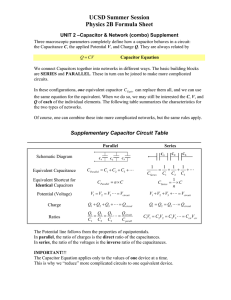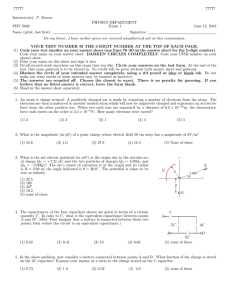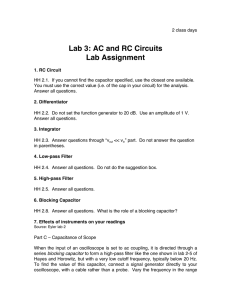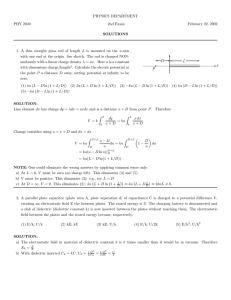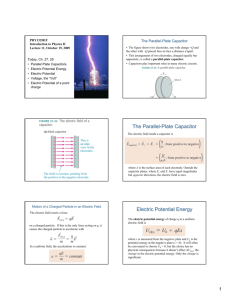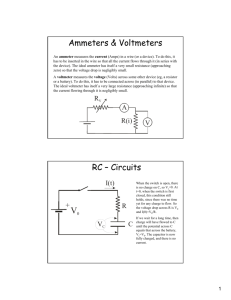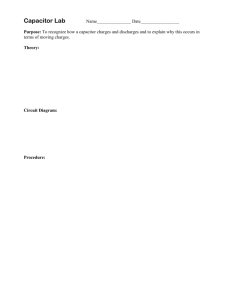Discharge and time constants
advertisement
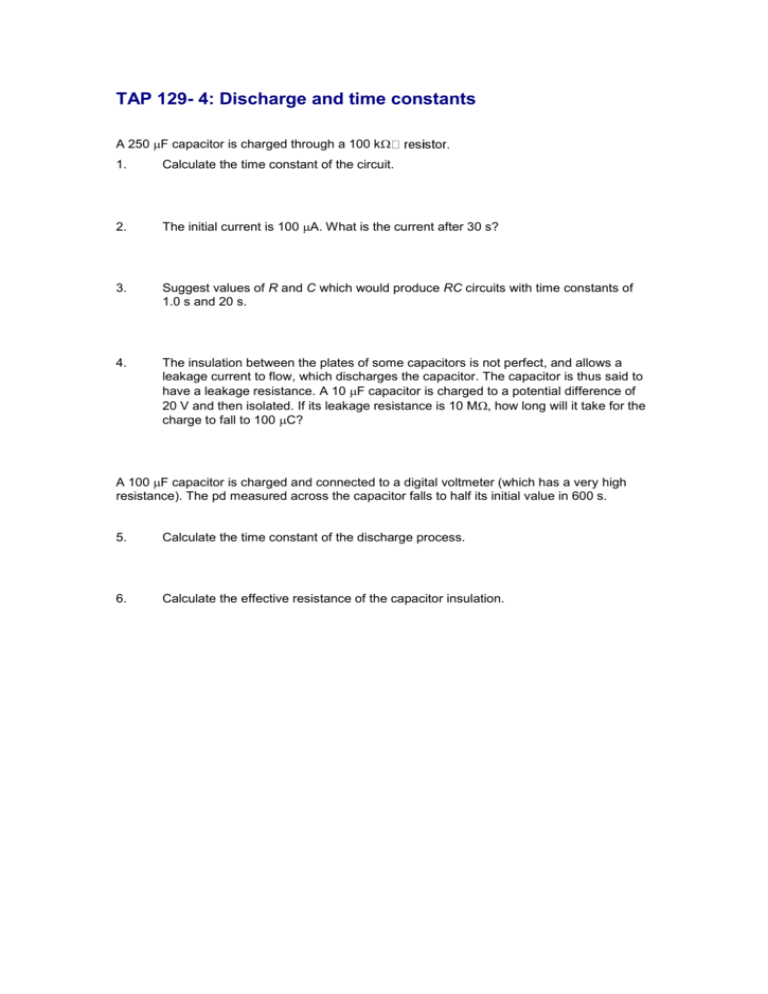
TAP 129- 4: Discharge and time constants A 250 F capacitor is charged through a 100 k 1. Calculate the time constant of the circuit. 2. The initial current is 100 A. What is the current after 30 s? 3. Suggest values of R and C which would produce RC circuits with time constants of 1.0 s and 20 s. 4. The insulation between the plates of some capacitors is not perfect, and allows a leakage current to flow, which discharges the capacitor. The capacitor is thus said to have a leakage resistance. A 10 F capacitor is charged to a potential difference of 20 V and then isolated. If its leakage resistance is 10 M how long will it take for the charge to fall to 100 C? A 100 F capacitor is charged and connected to a digital voltmeter (which has a very high resistance). The pd measured across the capacitor falls to half its initial value in 600 s. 5. Calculate the time constant of the discharge process. 6. Calculate the effective resistance of the capacitor insulation. Practical advice These questions require familiarity with time constants and the exponential function. Answers and worked solutions 1. 25 s 2. 30 A 3. For example, C = 10 F and R = 100 k; for example, C = 200 F and R = 100 k. 4. 69 s 5. 8.6 × 102 s 6. 8.6 M Worked solutions 1. R C = 250 10 –6 3 F 100 10 = 25 s 2. I I 0 e t / RC 100 A e 30 / 25 30 A 3. Any pair of values such that R C = 1.0 s and R C = 20 s is acceptable. 4. Q0 CV 10 F 20 V 200 C. . Since Q e t / RC , Q0 Q t ln RC Q0 1 ln 2 and t RC ln 2 (10 106 ) (10 106 F) 0.693 69 s. 5. V 1 e 600 s/RC V0 2 so 1 600 s ln RC 2 and 600 s RC 8.6 10 2 s. ln 2 6. R 8.6 10 2 s 100 10 6 F 8.6 M External references This activity is taken from Advancing Physics Chapter 10, 70S
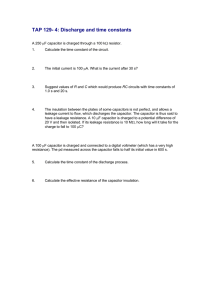
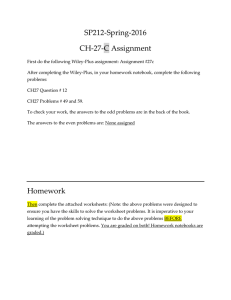


![Sample_hold[1]](http://s2.studylib.net/store/data/005360237_1-66a09447be9ffd6ace4f3f67c2fef5c7-300x300.png)
